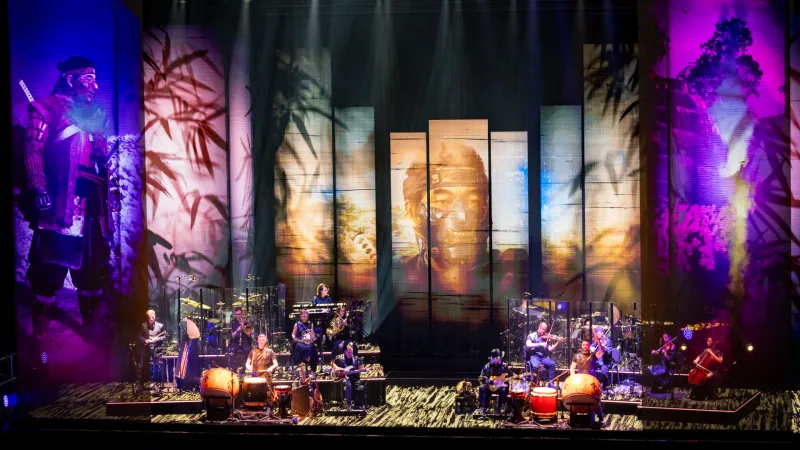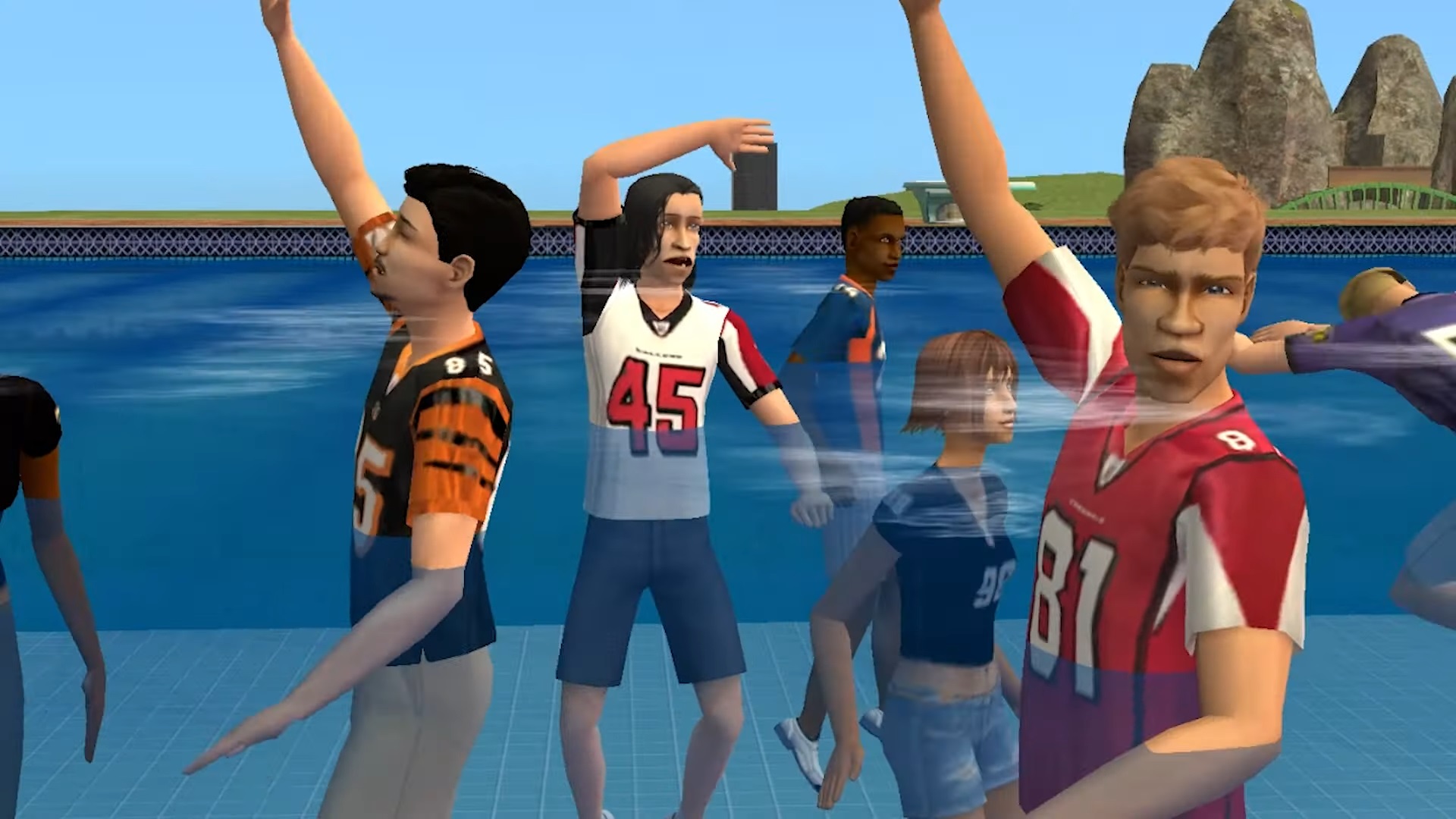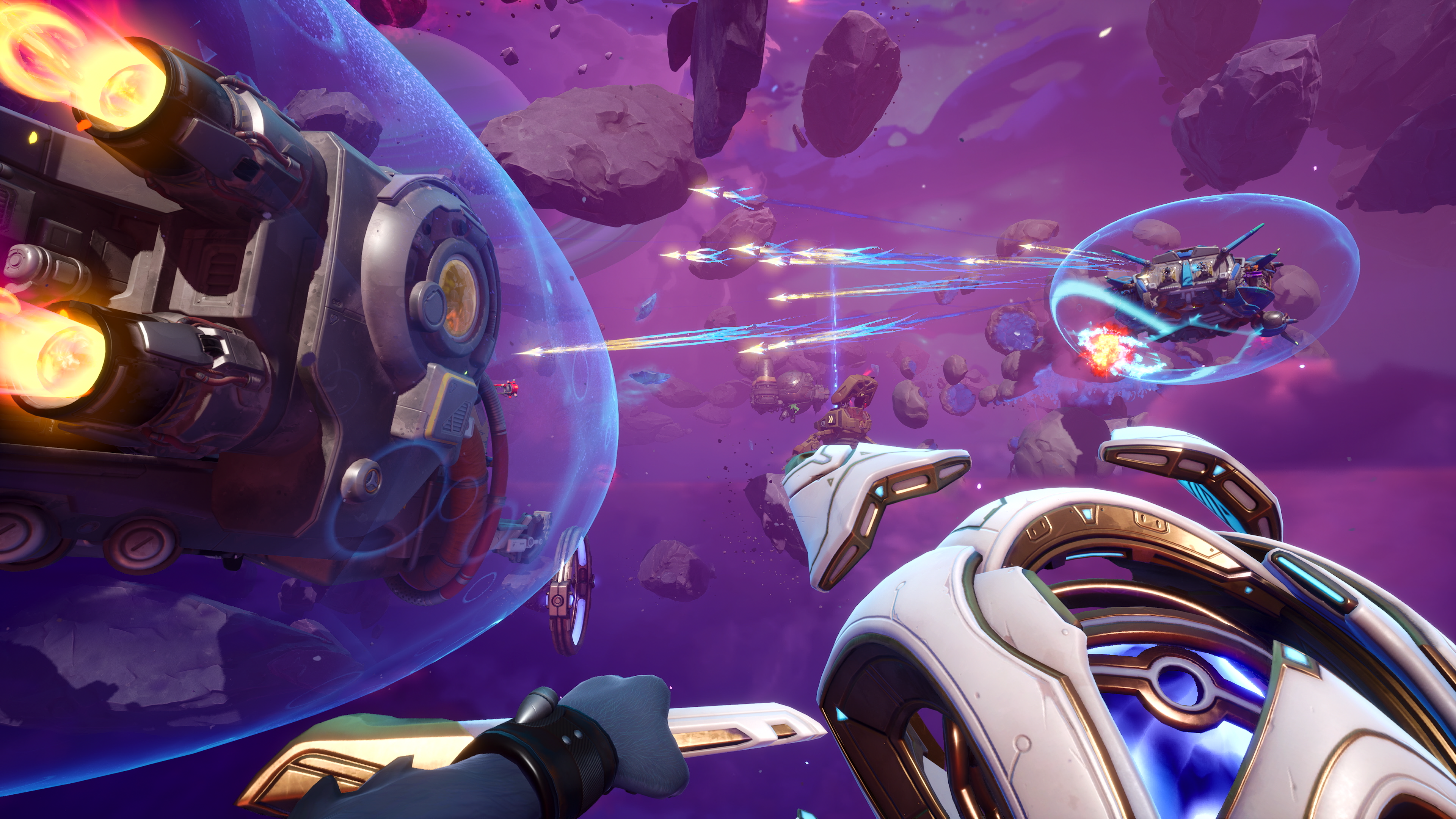
Do you dream of the chance to get dropkicked by a lava-monkey the size of a building? Of course you do, and goodness gracious is Wild Hearts excited to make that dream a reality. Omega Force and EA’s take on co-op monster hunting is a remarkably familiar one, mixing on-the-fly building mechanics into enormous elemental animal fights across its gorgeous feudal Japanese locations. But even when its crystal clear inspirations can sometimes lead to comparisons that aren’t always flattering for Wild Hearts, the few dozen hours I’ve spent with it so far have been a ton of fun, and I’m excited to keep grinding for materials as I progress toward the end of its campaign and into the endgame.
Let me be perfectly blunt: it’s nearly impossible to talk about Wild Hearts without bringing up Monster Hunter. That’s not to say this is an egregious rip-off or completely unoriginal, as it provides plenty of interesting additions and fun little twists all its own. But in pretty much every way that counts, Wild Hearts is so fundamentally Monster Hunter that you could very easily mistake it for the newest game in Capcom’s series if it weren’t for the name. That’s true of its giant monster-slaying missions, its crafting-based equipment progression with drastically different weapon types, its campaign structure continuously escalating and remixing previous encounters, and even its fine but ignorable story of a hub town investigating why local creatures have unexpectedly started attacking outside of their usual territory.
Importantly, Wild Hearts at least plays this recognizable part very well, making it one of the easiest recommendations I could make to any current Monster Hunter fan looking for new prey. Its combat captures that excellent mix of tactical and terrifying, pushing you to pick your moments carefully against foes many times your size who can often make your health bar disappear in the blink of an eye. It’s as much about learning the ins and outs of each monster, your weapons, and even the terrain around you as it is about actually executing the right button inputs.
The karakuri building system is excellent.
But because Wild Hearts is not actually a Monster Hunter game, it gets to leave behind certain legacy mechanics that have started to feel a little dated as Monster Hunter World and Monster Hunter Rise continue to streamline and modernize that two-decade-old series. I didn’t miss things like weapon sharpening or cluttered inventory management, and the simplified nature of stuff like stat-boosting food and support items means I feel like I’m spending more time out in the field and less on pre-hunt prep. So far Wild Hearts also seems to have lost some of the complexity I enjoy about Monster Hunter along with those clunkier parts, but this ground-up approach means it’s far easier to recommend to brand-new hunters, too.
The biggest way Wild Hearts sets itself apart is in its karakuri building system, which allows you to both create tactical objects like walls or springboards in the middle of combat as well as place structures like fast-travel tents or ziplines anywhere across its four hunting maps. This system is excellent, with the number of structures you can build limited enough to make me really consider where best to build a custom base camp or a convenient shortcut while still being flexible and open enough that I never had to overthink it, either. It turns the wonderfully detailed maps into little puzzles to be solved in whatever way you see fit, rather than simply arenas to fight in.
During those fights, karakuri play the role of quick-use support items – though everything you place sticks around until it’s destroyed (either by you or a monster), so battlefields can often be strewn with the remnants of past encounters in a pretty neat way. You can summon simple blocks to jump off of or build walls, springs to launch you in any direction, or torches to give you a fast fire attack. It’s an interesting mechanic, but it really shines when you start unlocking fusion karakuri, which let you stack these basic objects in specific patterns to make special constructs like huge bombs or chain traps. This ends up feeling like a mini combo system to master, and adds some nice consistency across all the weapon types.
Outside of those karakuri, each of the eight different weapons play very differently from one another. There are your simple-to-understand options like a middle-of-the-road katana, giant but slow hammer, or… well, literally just a gun. But there are also a couple of unique choices like the quick, bladed umbrella that’s built around parrying attacks. Wild Hearts’ combat is always a fun dance of reading attack patterns and timing both strikes and dodges well, but it was also a little daunting until I found the weapon that clicked with me: the Claw Blade. This fast-slicing knife also lets you pretty much fly through the air after hooking onto a monster, making for some absolutely epic moments as you strike from above.
The variety of monsters seems pretty low so far.
The monsters themselves are all pretty fun to fight too, with their cool and creative designs each boiling down to “normal animal plus elemental type multiplied by big.” Fights can be a real challenge when you’re playing solo (which is how I’ve spent most of my time so far, since the pre-launch server population is low), and it’s always satisfying to learn their behaviors and turn an initially hard encounter into something trivial through practice and grinding alone. My main issue at this point is that the amount and variety of monsters seems pretty low, with different elemental variants or just stronger “Mighty” versions being introduced almost right away. Those don’t look that different or feel like totally new enemies to fight, so while I’m still having fun for now, I could see it wearing thin if things aren’t shaken up down the line.
That’s also a symptom of Wild Hearts’ structure, with a campaign that is quick to put you up against a foe it’s confident you won’t be able to beat without preparation. That means collecting monster parts to craft new armor or upgrading your weapons through a sprawling tech tree. It’s another very familiar system, but so far there’s less to tinker with here to eek out little advantages than I’m accustomed to as a Monster Hunter veteran – you can’t increase the armor rating of a piece of equipment individually, just make new pieces, and the only way to customize weapons is through a small handful of perks they can inherit as you upgrade them. That means these difficulty spikes incentivize you to grind for armor and weapons tailored toward beating the gatekeeping monster specifically, which is a lot less empowering than finding the direction that most interests me and crafting a build that makes it work.
That all said, I have a lot more Wild Hearts left to play, and right now I am excited to do so. Its equipment systems seem simpler than that of Monster Hunter, but that can be both a good thing and a bad thing, so only time will tell if it’s worth digging deep into. I also hope its monster variety gets more meaningful as I go further, but I’m far from bored yet with what I’ve seen already. All that’s left is to keep hunting and see what the campaign (and the endgame) have in store for me, and I’ll be back with a final scored review for its launch on the February 16 once I have.





